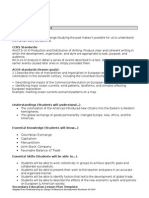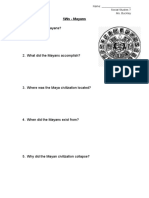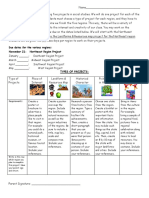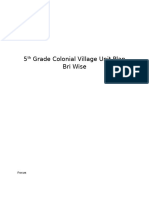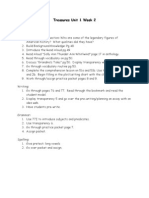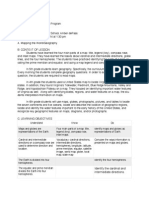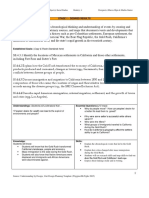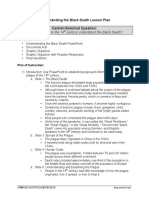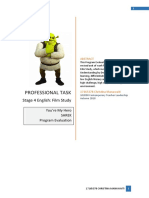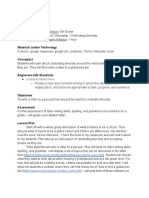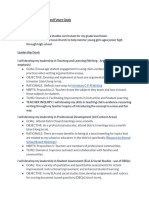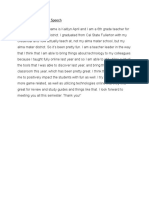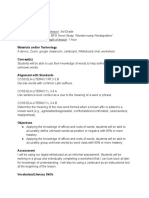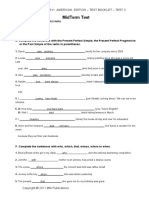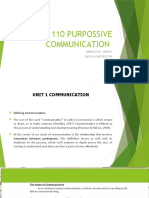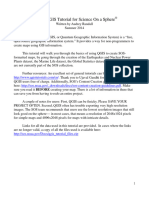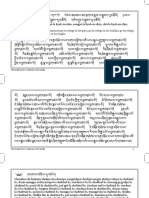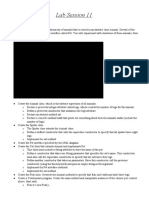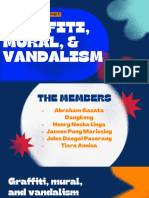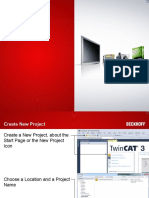Kaitlyn April
General Information
Grade level of the lesson: 6th Grade
Lesson topic: Social Studies - Early Humankind
Estimated time length of lesson: 1 hour
Materials and/or Technology
A device, google classroom, google jamboard, student notebooks, textbooks
Concept(s)
Students will be able to use their knowledge of early humans to help create a timeline of
major events from the beginning of humankind to the present.
Alignment with Standards
● 6.1 - Students describe what is known through archaeological studies of the early
physical and cultural development of humankind from the Paleolithic era to the
agricultural revolution.
Objectives
Applying the knowledge of early humans, students will be able to accurately create a
timeline of major events from the beginning of humankind to the present with 80% or
more mastery.
Assessment
I will be using the student's created google jamboard as their unit assessment. Students
will be working in groups to complete the timeline and informative slides, but each
student will use a different color ‘sticky note’ to show their work and understanding.
Vocabulary/Literacy Skills
● Vocabulary learned/reinforced
○ Paleolithic, mesolithic, neolithic, hominid, homo erectus, homo sapien,
● Literacy skills
○ Listening, speaking, reading, writing
Procedure
Name of instructional model: In-person Instruction
Student Groupings: Whole Class Discussion, Group/Individual Work
Modifications:
● English Learners: Extra time, discussion, modeling
� ● IEP Students (Inclusion Students): Extra time, discussion, modeling
A. Focus/Motivation (Open)
The lesson before will be an introduction to this main lesson. I will be introducing
more of the vocabulary we are going through and all the rest of the information they will
need to complete their timeline. We will be discussing the different phases of “The
Stone Age” and will look at a hominid timeline for the different species in the Homo
genus. Students will be adding to their social notebooks with interactive worksheets that
break down the information.
Day of the lesson, as a whole group, we will go through all the information the
students have added to their notebooks. This will be a bit of a review from previous
lessons.
B. Development (Body)
As a whole group, we will discuss how a timeline works. Events toward the left
side of the timeline are further in the past than events on the right side. We will review
how dates work and what “BCE” means and how it relates to a number line and zero
being the middle of negative and positive numbers. After discussing the timeline, we will
discuss what might need to go on our timeline. Which events are important? What have
we been studying? Students will have their notebook as reference. I will create a list on
the board for students to view. I will then go over the rules of the project. Students will
be placed in groups to create a timeline on google Jamboard. They will be able to work
collaboratively in real time. I will also be able to see their work in real time from my own
computer. Each student in the group will choose a color ‘sticky note’ to show their
individual participation in the project. After creating the timeline, they will make
subsequent slides explaining each of the events they put on their timeline. They will still
use their color of sticky note, but the group can decide how to separate the work. This
where students will be able to do extra research to expand on the events of the timeline.
They will be able to use information from their notebooks as well. They can also add
photos to add to the information they are presenting. For my more advanced students, I
will ask them to provide more information and might have specific information I want
them to add or research.
C. Closure (Close)
This lesson will be more than one days worth of work. To end the day of this
lesson, I want students to use a real sticky note for an exit ticket. The question for their
exit ticket will be “What is one new thing that you learned today in social studies?” The
hope is that it would relate to their project, but they might be learning something new
�that they had missed in previous lessons. I want students to think a bit deeper about
their own learning and it will give me some understanding of where they are in their
learning as well.







